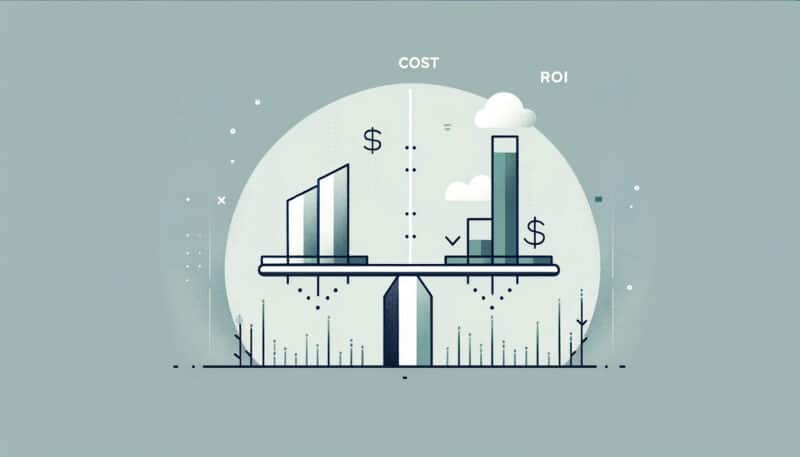The most frequent question that gets asked in our business is “how much does a video cost??” – the answer is … “it depends”. Not a very satisfying answer, we know!
Video production can be incredibly challenging to price, with quotes sometimes varying wildly. Why is that? Here’s a useful overview with some great tips to help you understand what accelerates production costs, how to select the appropriate investment for your content, and how to get the best from your budget.

What creates video production cost?
There are a lot of things that produce cost on a production. You can probably guess a few of the obvious ones:
- Time. The more time that is spent in pre-production preparations, scripting, storyboarding, location scouting, shooting and editing, the better the final video quality will be. Ultimately, more time and more people, equals more money.
- Talent. Will your production feature people? If that’s the case, do you have contributors who will take part, or do you require casting? A voice actor, experience on-screen talent, or just a room full of extras can all add huge value to a piece of video content. As with most other businesses, experienced people tend to cost more.
- Travel. How many locations will be featured? Do you own these, or will permission be required? Using a variety of different locations can help you tell a richer story, and more so, controllable environments can ensure that you achieve specific shot framing, lighting and creative approach. Location requirements not only impact on the preparation time needed with regards to research and negotiations, but also crew hire – which as we’ve established time is money!
However less often considered because it’s less perceivable, but no less important is Production Value.
I’m sure that we’ve all ways a fantastic film that looks amazing, versus an incredibly bland alternative. With innovative camera technology becoming more accessible, and the entry level cost to making a film has decreased it’s invariably other factors that makes the difference – creative ideas, storyboarding to ensure a good idea actually works on screen, dynamic camera techniques, lighting expertise, effective editing, powerful sound design, colour grading – all of these elements contribute to the final deliverable, and whilst individually might not feel important, collectively they can make the significant difference between an ineffective and effective video.
What are the different investment levels when producing content?
With the cost driving factors in mind, what production constitutes a ‘low cost’ approach, and what approach means a ‘bigger investment’, plus how do you decide which to use, and when? You can (albeit roughly) group video investments into five levels:
1 – DIY
Also known as the ‘do-it-yourself’ approach, which is generally self-taught and using very basic video equipment. Think simple talking heads style video blogs.
- Benefits: Fast and inexpensive, as well as potentially appropriately authentic.
- Risks: The results will often look DIY and could erode your brand credibility if not used appropriately.
2 – Semi Professional
This requires somebody with limited experience using somewhat sophisticated camera equipment and video editing software. Think events filming, standard talking-heads and sometimes internal training content.
- Benefits: Better quality, while still achievable in quick turnaround timings and very affordable.
- Risks: Wide variations in quality, often more ‘functional’ content with a simple and un-dynamic camera setup.
3 – Professional
This includes a solid professional crew and edit studio using professional kit. Think typical ‘corporate’ film and help content; e.g. case studies, service/product films, or recruitment videos.
- Benefits: High production quality using that conveys your brand’s credibility.
- Risks: May limit the creative opportunities as often working within tighter budget and or timings.
4 – Premium
Similar to professional, however includes top-level talent, high-end kit, and more time to elevate your production to something exceptional. Use this production level to tell a compelling story and capture maximum attention. Think “Wow!” hero pieces such as brand videos, credibility-building case studies, recruitment videos or service/product introductions.
- Benefits: High production quality using that conveys your brand’s credibility.
- Risks: May limit the creative opportunities as often working within tighter budget and or timings.
5 – Hollywood
Top level, top talent, no-compromises approach. Think premium movie trailer, Superbowl; high-end advertising or a compelling signature piece of hero content. Likely to include other techniques and disciplines like CGI, VFX, SFX and complex motion graphics.
- Benefits: (as per ‘premium’, but) more likely to include a stand out idea that’s never been seen before that can add significant stand out for your brand
- Risks: In light of the costs involved, you must be clear and certain of the purpose.

How do you set your budget?
Before you can begin getting a budget for your video content, you need to be clear on what you’re looking to achieve, and determine what resources that you have available to you.
For instance, are you looking to increase credibility, build your brand, attract new customers or recruit new people? Do you have an interesting story to tell? For these types of content, you’ll typically require professional or premium level of quality to achieve a satisfying video. If your brand has sufficient resources and wishes to compete at the highest level, a premium production will tell your story with incomparable style and class.
If you’re simply conveying information to an interested audience, the professional level is often sufficient without sacrificing your brand credibility.
Smaller organisations with limited budgets may have to accept lower production values, however even at these levels videos can provide a real impact to your overall marketing strategy.
As you make decisions about video, the most important takeaway is to be realistic about your expectations. Do not expect to pay a semi professional rate, and get a professional product.

How to get the best from your budget?
If you haven’t been involved with video production before, it’s natural to feel slightly daunted by the process. Here’s a few additional tips to help you get the most of our the experience, and your production budget.
1 – Know what you want to achieve
One of the biggest reasons that a project falls short of expectations is that the client (in this case, yourself) can’t decide what they’re looking for and often keeps moving the goalposts during production. This quickly adds costs and erodes the quality of the end product because time is invested in all the wrong parts of the process.
2 – Be available to supply resources that the producer needs
They might know marketing and your industry, however nobody can ever know your brand better than you. This can include everything from access to people, locations, relevant logos and photography to the prompt review of concepts, scripts and rough edits.
3 – Review the budget breakdown carefully, and make sure you understand what will be invested
There are many finer details that elevate the production value of content such as art department, motion graphics, music, sound design, colour correction etc., which make a significant difference to the quality of a video. One person cannot be an expert in all these areas, so you need to have confidence that your producer will be investing at the right level for your brand.
4 – Know your customer journey
Depending on what point of the customer journey that you’re adding content to will determine the relevant level of investment to make. If you need to inspire your audience and establish brand visibility – be brave and aim for a really standout hero piece, versus simple information content that can be just as effective, but with a lower level investment.
Video can play a huge roll in engaging with your customers, and provide a formidable impact for your brand, whatever your budget there is a great video opportunity out there.





